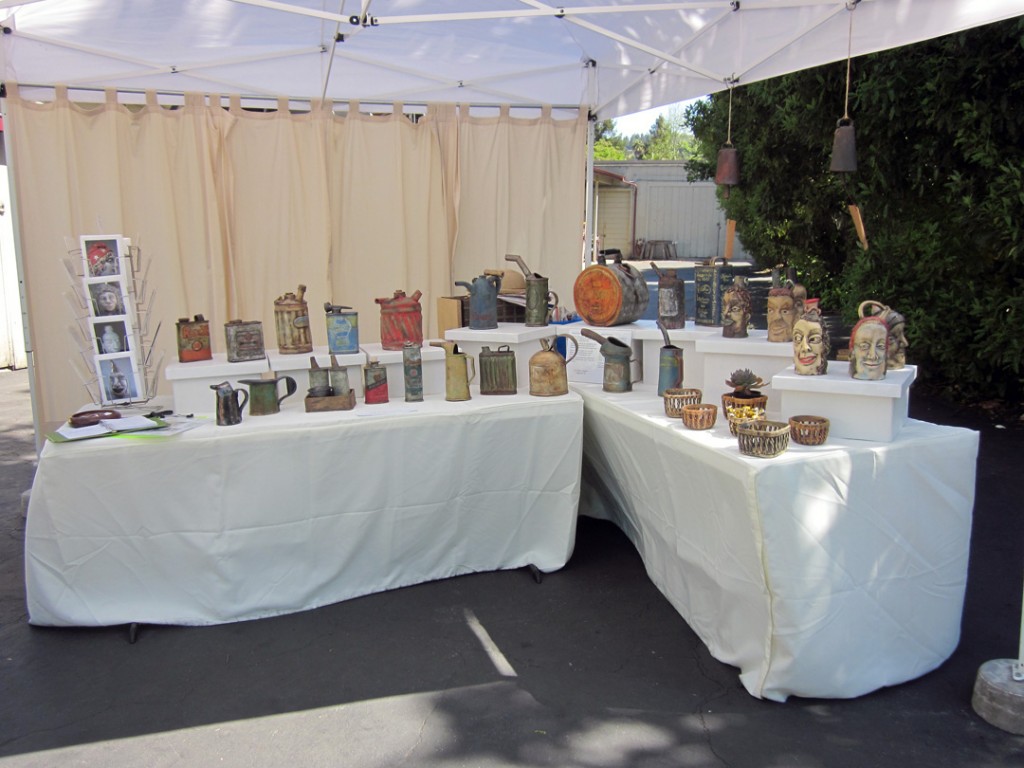In terms of ceramic art, mine and others, I did it up royally last weekend. That means I went for maximum effort and uber-luxe spectacle by attending and participating in both the California Conference for the Advancement of Ceramic Art AND the Santa Cruz Clay Show and Sale at Bargetto Winery.
Friday: To Davis, CA and back (2.5 hours each way) in 12 hours. The other 7 hours we were NOT in the car, we toured 45 exhibits and demos at the 22nd annual CCACA. What a whirlwind of wonderful work! I’m always dumbfounded by a few pieces and suitably inspired by a great many more. For the first time, I was kinda sad not to have the whole weekend there.
Biggest showstopper of course: Cabrillo College’s outdoor exhibit titled “Hard Times.” Described as “a social comment on the economic down-turn and a trompe l’oeil ceramic art installation.” My all-ceramic aquarium piece, which I have previously spoken of, was made for this. Here are a few shots, a street view and one from the uphill side of things.


All the “pedestals” are pieces of furniture. Everything else is a ceramic treasure. (Well, you already know the aquarium is glass…) It’s daring to take an outdoor space and fill it with such a large concept. And when the sprinklers went on Sunday morning, the aquarium even held some water.
Saturday and Sunday: My first away from my studio outdoor ceramic booth set-up and sale. I called it a Pop-uP Pottery Village. It contained a population of around 25 local ceramic artists. We were all lined up in row and around a courtyard, representing an impressive range of pottery and sculpture, featuring artists old and new to both the craft and the sale. (Me? Definitely a Newbie on all counts, really.)
I found an authentically playful way to engage my visitors and my colleagues, felt surprisingly comfortable and pleased with how it turned out. At the end of Sunday, all my business cards were gone, I added a dozen new fans to my mailing list, made respectable sales, got a couple of leads to galleries (!) and found out I must have a bigger vehicle in order to safely hold the booth, furniture, display shelves and all the carefully packed boxes of breakable work.
Here are two views of my booth set-up, front view and from behind the “counter.”


It was probably a good thing to be so incredibly busy because my game got really tight. Not only did I survive some completely new ventures, I was energized and encouraged by them. A few things still need to be put away, the studio needs a good clean-out, but I am happily aware of how getting out there completes the creative cycle for me. Each time round is less scary and confusing and I savor the recharged impetus to make more work. And, best of all, thankfully these two events will NOT be on the same weekend in 2012. Yes!

















